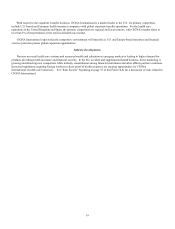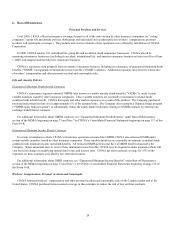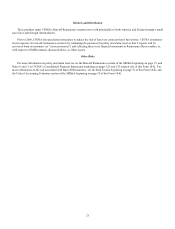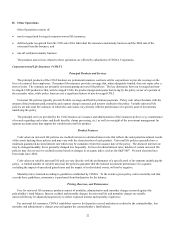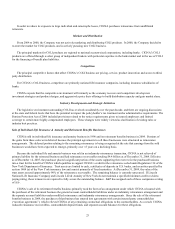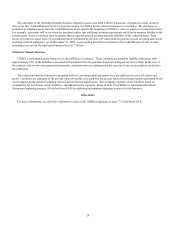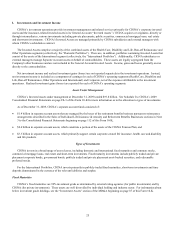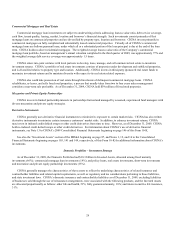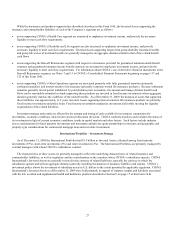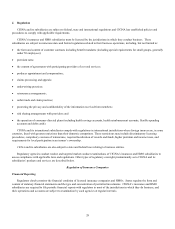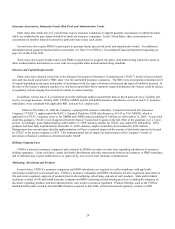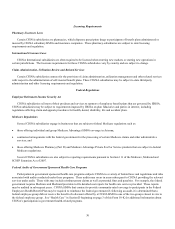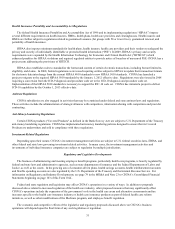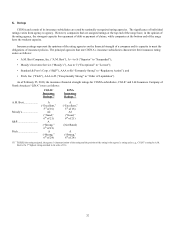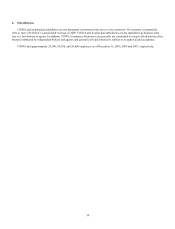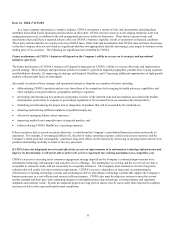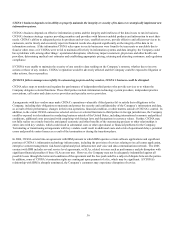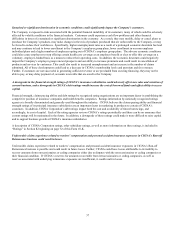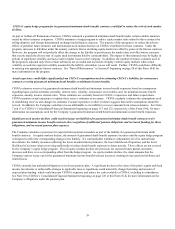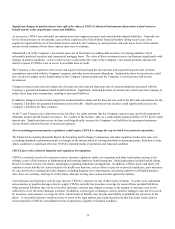Cigna 2009 Annual Report Download - page 49
Download and view the complete annual report
Please find page 49 of the 2009 Cigna annual report below. You can navigate through the pages in the report by either clicking on the pages listed below, or by using the keyword search tool below to find specific information within the annual report.29
Guaranty Associations, Indemnity Funds, Risk Pools and Administrative Funds
Most states and certain non-U.S. jurisdictions require insurance companies to support guaranty associations or indemnity funds,
which are established to pay claims on behalf of insolvent insurance companies. In the United States, these associations levy
assessments on member insurers licensed in a particular state to pay such claims.
Several states also require HMOs to participate in guaranty funds, special risk pools and administrative funds. For additional
information about guaranty fund and other assessments, see Note 23 to CIGNA’s Consolidated Financial Statements beginning on
page 163 of this Form 10-K.
Some states also require health insurers and HMOs to participate in assigned risk plans, joint underwriting authorities, pools or
other residual market mechanisms to cover risks not acceptable under normal underwriting standards.
Solvency and Capital Requirements
Many states have adopted some form of the National Association of Insurance Commissioners (“NAIC”) model solvency-related
laws and risk-based capital rules (“RBC rules”) for life and health insurance companies. The RBC rules recommend a minimum level
of capital depending on the types and quality of investments held, the types of business written and the types of liabilities incurred. If
the ratio of the insurer’s adjusted surplus to its risk-based capital falls below statutory required minimums, the insurer could be subject
to regulatory actions ranging from increased scrutiny to conservatorship.
In addition, various non-U.S. jurisdictions prescribe minimum surplus requirements that are based upon solvency, liquidity and
reserve coverage measures. During 2009, CIGNA’s HMOs and life and health insurance subsidiaries, as well as non-U.S. insurance
subsidiaries, were compliant with applicable RBC and non-U.S. surplus rules.
Effective December 31, 2009 the Company’s principal life insurance subsidiary, Connecticut General Life Insurance
Company (“CGLIC”), implemented the NAIC’s Actuarial Guideline XLIII (also known as AG 43 or VACARVM), which is
applicable to CGLIC’s statutory reserves for GMDB and GMIB contracts totaling $1.6 billion as of December 31, 2009. As provided
under this guidance, CGLIC received approval from the State of Connecticut to grade-in the full effect of the guideline over a 3-year
period. Accordingly, upon implementation at December 31, 2009, statutory surplus for CGLIC was reduced by $40 million. If the
guidance had been fully implemented at December 31, 2009, statutory surplus would have been reduced by $110 million.
Management does not anticipate that this implementation will have a material impact on the amount of dividends expected to be paid
by CGLIC to the parent company in 2010. This implementation has no impact on measurement of the Company’s results of
operations or financial condition as determined under GAAP.
Holding Company Laws
CIGNA’s domestic insurance companies and certain of its HMOs are subject to state laws regulating subsidiaries of insurance
holding companies. Under such laws, certain dividends, distributions and other transactions between an insurance or HMO subsidiary
and its affiliates may require notification to, or approval by, one or more state insurance commissioners.
Marketing, Advertising and Products
In most states, CIGNA’s insurance companies and HMO subsidiaries are required to certify compliance with applicable
advertising regulations on an annual basis. CIGNA’s insurance companies and HMO subsidiaries are also required in most states to
file and secure regulatory approval of products prior to the marketing, advertising, and sale of such products. State and/or federal
regulatory scrutiny of life and health insurance company and HMO marketing and advertising practices, including the adequacy of
disclosure regarding products and their administration, may result in increased regulation. Product offerings, such as the CIGNA
limited benefits plans issued by the Star HRG business acquired in July 2006, attracted increased regulatory scrutiny in 2009.


